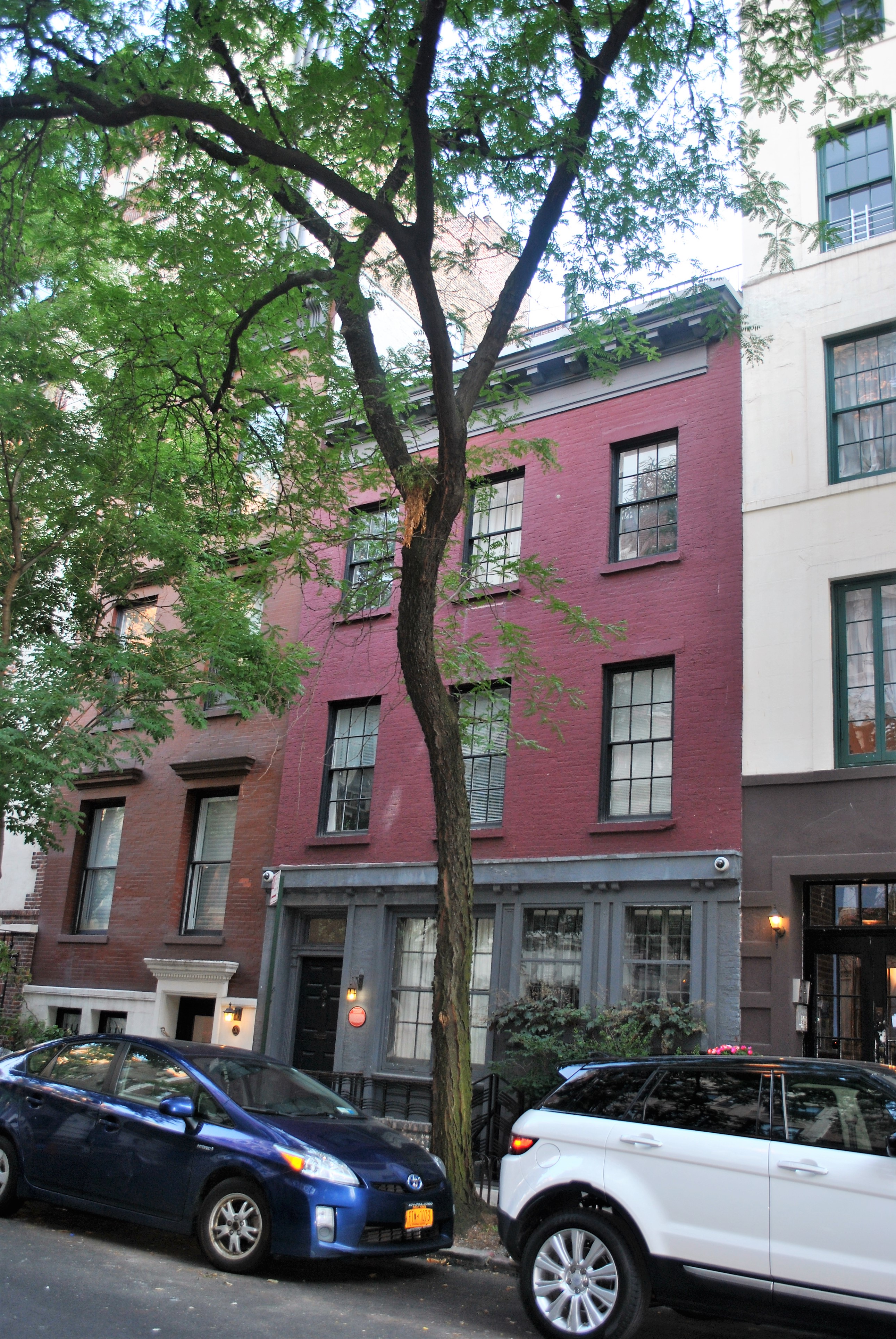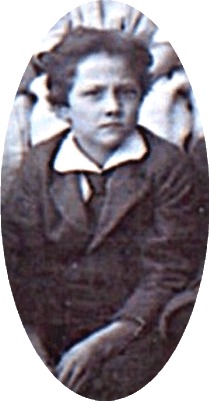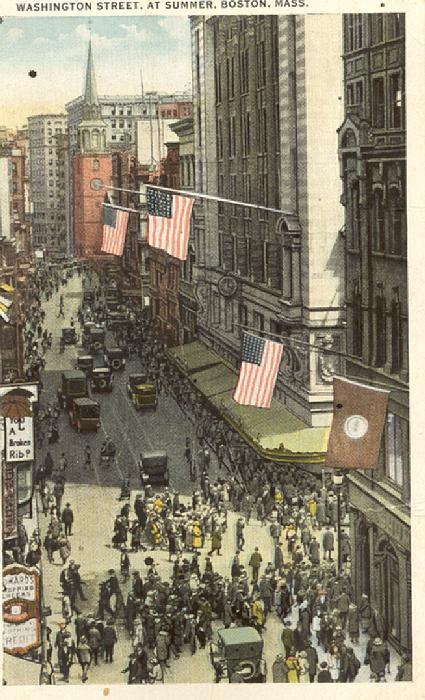|
Lincoln Kirstein
Lincoln Edward Kirstein (May 4, 1907 – January 5, 1996) was an American writer, impresario, art connoisseur, philanthropist, and cultural figure in New York City, noted especially as co-founder of the New York City Ballet. He developed and sustained the company with his organizing ability and fundraising for more than four decades, serving as the company's general director from 1946 to 1989. According to the ''New York Times,'' he was "an expert in many fields", organizing art exhibits and lecture tours in the same years. Early life Kirstein was born in Rochester, New York, to Jewish parents, the son of Rose Stein and Louis E. Kirstein (1867–1942). His brother was George Kirstein, his sister was Mina Kirstein and his paternal grandparents were Jeanette (née Leiter) and Edward Kirstein, a successful Rochester clothing manufacturer who ran E. Kirstein and Sons, Company. He grew up in a wealthy, Jewish, Bostonian family and attended the private Berkshire School, along with Geo ... [...More Info...] [...Related Items...] OR: [Wikipedia] [Google] [Baidu] |
Walker Evans
Walker Evans (November 3, 1903 – April 10, 1975) was an American photographer and photojournalist best known for his work for the Farm Security Administration (FSA) documenting the effects of the Great Depression. Much of Evans' work from the FSA period uses the large-format, 8×10-inch (200×250 mm) view camera. He said that his goal as a photographer was to make pictures that are "literate, authoritative, transcendent". Many of his works are in the permanent collections of museums and have been the subject of retrospectives at such institutions as the or the |
George Kirstein
George Kirstein (December 10, 1909 – April 3, 1986) was publisher and principal owner of The Nation magazine from 1955 to 1965. Background George G. Kirstein was born on December 10, 1909, Boston. He attended the Berkshire School, a private boarding school in Sheffield, Massachusetts and graduated in 1929. He attended Harvard College and graduated in 1933. Career After Harvard, Kirstein went to Hollywood, where he worked as an assistant director at RKO. He then worked at Bloomingdale's from 1938 to 1941. During World War II, he served as executive secretary of the National Defense Mediation Board and the National War Labor Board. He also served as a lieutenant in the U.S. Navy, stationed in the South Pacific from 1943 to 1945. He worked five years as a management labor-consultant, then became executive vice president of the Health Insurance Plan of Greater New York from 1950 to 1955. He then bought and published The Nation from 1955 to 1965. In its obituary, the New ... [...More Info...] [...Related Items...] OR: [Wikipedia] [Google] [Baidu] |
Edward M
Edward is an English given name. It is derived from the Anglo-Saxon name ''Ēadweard'', composed of the elements '' ēad'' "wealth, fortune; prosperous" and '' weard'' "guardian, protector”. History The name Edward was very popular in Anglo-Saxon England, but the rule of the Norman and Plantagenet dynasties had effectively ended its use amongst the upper classes. The popularity of the name was revived when Henry III named his firstborn son, the future Edward I, as part of his efforts to promote a cult around Edward the Confessor, for whom Henry had a deep admiration. Variant forms The name has been adopted in the Iberian peninsula since the 15th century, due to Edward, King of Portugal, whose mother was English. The Spanish/Portuguese forms of the name are Eduardo and Duarte. Other variant forms include French Édouard, Italian Edoardo and Odoardo, German, Dutch, Czech and Romanian Eduard and Scandinavian Edvard. Short forms include Ed, Eddy, Eddie, Ted, Teddy and Ned ... [...More Info...] [...Related Items...] OR: [Wikipedia] [Google] [Baidu] |
Observer
An observer is one who engages in observation or in watching an experiment. Observer may also refer to: Computer science and information theory * In information theory, any system which receives information from an object * State observer in control theory, a system that models a real system in order to provide an estimate of its internal state * Observer pattern, a design pattern used in computer programming Fiction * ''Observer'' (video game), a cyberpunk horror video game * Observer (''Mystery Science Theater 3000''), a fictional television character * Observers, beings in the television show ''Fringe'' Military * Air observer, an aircrew member * Artillery observer, a front line personnel who directs fire discipline for artillery strikes * Royal Observer Corps, a civil defence organisation, originally tasked with reporting enemy aircraft * Observer, a non-participating officer, or umpire, tasked with observing the actions of soldiers during a field training or military ex ... [...More Info...] [...Related Items...] OR: [Wikipedia] [Google] [Baidu] |
Ballets Russes
The Ballets Russes () was an itinerant ballet company begun in Paris that performed between 1909 and 1929 throughout Europe and on tours to North and South America. The company never performed in Russia, where the Revolution disrupted society. After its initial Paris season, the company had no formal ties there. Originally conceived by impresario Sergei Diaghilev, the Ballets Russes is widely regarded as the most influential ballet company of the 20th century, in part because it promoted ground-breaking artistic collaborations among young choreographers, composers, designers, and dancers, all at the forefront of their several fields. Diaghilev commissioned works from composers such as Igor Stravinsky, Claude Debussy, Sergei Prokofiev, Erik Satie, and Maurice Ravel, artists such as Vasily Kandinsky, Alexandre Benois, Pablo Picasso, and Henri Matisse, and costume designers Léon Bakst and Coco Chanel. The company's productions created a huge sensation, completely reinvigorat ... [...More Info...] [...Related Items...] OR: [Wikipedia] [Google] [Baidu] |
Apollo (ballet)
''Apollo'' (originally ''Apollon musagète'' and variously known as ''Apollo musagetes'', ''Apolo Musageta'', and ''Apollo, Leader of the Muses'') is a neoclassical ballet in two ''tableaux'' composed between 1927 and 1928 by Igor Stravinsky. It was choreographed in 1928 by twenty-four-year-old George Balanchine, with the composer contributing the libretto. The scenery and costumes were designed by André Bauchant, with new costumes by Coco Chanel in 1929. The scenery was executed by Alexander Shervashidze, with costumes under the direction of Mme. A. Youkine. The American patron of the arts Elizabeth Sprague Coolidge had commissioned the ballet in 1927 for a festival of contemporary music to be held the following year at the Library of Congress in Washington, D.C. The story centres on Apollo, the Greek god of music, who is visited by three Muses: Terpsichore, muse of dance and song; Polyhymnia, muse of mime; and Calliope, muse of poetry. The ballet takes Classical antiquity a ... [...More Info...] [...Related Items...] OR: [Wikipedia] [Google] [Baidu] |
School Of American Ballet
The School of American Ballet (SAB) is the most renowned ballet school in the United States. School of American Ballet is the associate school of the New York City Ballet, a ballet company based at the Lincoln Center for the Performing Arts in New York City. The school trains students from the age of six, with professional vocational ballet training for students aged 11–18. Graduates of the school achieve employment with leading ballet companies worldwide, and in the United States with New York City Ballet, American Ballet Theatre, Boston Ballet, San Francisco Ballet, Miami City Ballet, Pacific Northwest Ballet and Houston Ballet. History The school was founded by the renowned Russo-Georgian-born choreographer George Balanchine, and philanthropists Lincoln Kirstein and Edward Warburg in 1934. Balanchine's self- prescribed edict, "But first, a school", is indicative of his adherence to the ideals of the training that was fostered by the Imperial Ballet School where he receive ... [...More Info...] [...Related Items...] OR: [Wikipedia] [Google] [Baidu] |
George Balanchine
George Balanchine (; Various sources: * * * * born Georgiy Melitonovich Balanchivadze; ka, გიორგი მელიტონის ძე ბალანჩივაძე; January 22, 1904 (O. S. January 9) – April 30, 1983) was an ethnic Georgian American ballet choreographer who was one of the most influential 20th-century choreographers. Styled as the father of American ballet, he co-founded the New York City Ballet and remained its artistic director for more than 35 years.Joseph Horowitz (2008)''Artists in Exile: How Refugees from 20th-century War and Revolution Transformed the American Performing Arts.''HarperCollins. His choreography is characterized by plotless ballets with minimal costume and décor, performed to classical and neoclassical music. Born in St. Petersburg, Balanchine took the standards and technique from his time at the Imperial Ballet School and fused it with other schools of movement that he had adopted during his tenure on Broadway and in ... [...More Info...] [...Related Items...] OR: [Wikipedia] [Google] [Baidu] |
Hound & Horn
''Hound & Horn'', originally subtitled "a Harvard Miscellany", was a literary quarterly founded by Harvard undergrads Lincoln Kirstein and Varian Fry in . At the time, the college's literary magazine ''The Harvard Advocate'' did not accept their work, so they convinced Kirstein's father, the president of Filene's Department Store in Boston, to fund the launch of their own literary magazine. Modeled on T. S. Eliot's ''The Criterion'', it was intended to focus on student life at the university and work submitted by its students and famous literary Harvard alumni. Later on in its run, the publication broadened in scope to include many modern writers. The title of the magazine was taken from Ezra Pound's poem "The White Stag": "'Tis the white stag Fame we're hunting, bid the world's hounds come to horn.” Contributions were made by writers such as Gertrude Stein, Katherine Ann Porter and a young Elizabeth Bishop. In 1928, R.P. Blackmur became the magazine's first managing editor, ... [...More Info...] [...Related Items...] OR: [Wikipedia] [Google] [Baidu] |
Varian Fry
Varian Mackey Fry (October 15, 1907 – September 13, 1967) was an American journalist. Fry ran a rescue network in Vichy France that helped approximately 2,000 to 4,000 anti-Nazi and Jewish refugees to escape Nazi Germany and the Holocaust. He was the first of five Americans to be recognized as "Righteous Among the Nations", an honorific given by the State of Israel to non-Jews who risked their lives to save Jews during the Holocaust. Early life Fry was born in New York City. His parents were Lillian (Mackey) and Arthur Fry, a manager of the Wall Street firm Carlysle and Mellick. The family moved to Ridgewood, New Jersey, in 1910. He grew up in Ridgewood and enjoyed bird-watching and reading. During World War I, at 9 years of age, Fry and friends conducted a fund-raising bazaar for the American Red Cross that included a vaudeville show, an ice cream stand and fish pond. He was educated at Hotchkiss School from 1922 to 1924, when he left the school due to hazing rituals. ... [...More Info...] [...Related Items...] OR: [Wikipedia] [Google] [Baidu] |
The Harvard Advocate
''The Harvard Advocate'', the art and literary magazine of Harvard College, is the oldest continuously published college art and literary magazine in the United States. The magazine (published then in newspaper format) was founded by Charles S. Gage and William G. Peckham in 1866 and, except for a hiatus during the last years of World War II, has published continuously since then. In 1916, ''The New York Times'' published a commemoration of the ''Advocates fiftieth anniversary. Fifty years after that, Donald Hall wrote in ''The New York Times Book Review'' that "In the world of the college – where every generation is born, grows old and dies in four years – it is rare for an institution to survive a decade, much less a century. Yet the Harvard Advocate, the venerable undergraduate literary magazine, celebrated its centennial this month." Its current offices are a two-story wood-frame house at 21 South Street, near Harvard Square and the University campus. Today, the ''Harvard ... [...More Info...] [...Related Items...] OR: [Wikipedia] [Google] [Baidu] |
Filene's
Filene's (formally William Filene & Sons Co.) was an American department store chain; it was founded by William Filene in 1881. The success of the original full-line store in Boston, Massachusetts, was supplemented by the foundation of its off-price sister store Filene's Basement in 1908. Filene's, in partnership with Abraham & Straus, Lazarus, and Shillito's, was an original member of the holding company Federated Department Stores upon its establishment in 1929. Filene's expanded into shopping malls throughout New England and New York in the later half of the twentieth century, and was rivaled by fellow Boston-based department store Jordan Marsh. Federated sold Filene's to The May Department Stores Company, and spun off Filene's Basement into a separate company, in 1988. With this reorganization, the Filene's nameplate replaced the Hartford-based G. Fox & Co. in 1992 and Steiger's in 1994; the store assumed control of the Pittsburgh-based department store chain Kaufmann's in ... [...More Info...] [...Related Items...] OR: [Wikipedia] [Google] [Baidu] |




.jpg)

